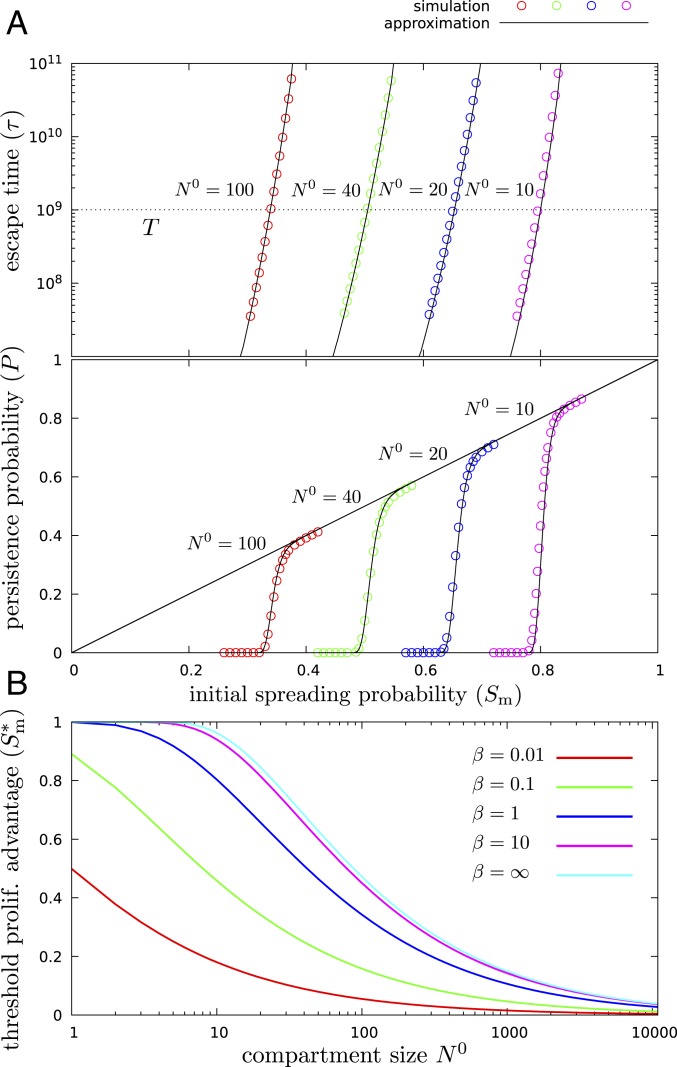Fig. 3.
There is no somatic evolution under the threshold spreading factor. (A) In the presence of tissue size regulation (), below a threshold proliferation advantage, , mutants rapidly go extinct and, as a result, have vanishing probability to persist in the tissue through its lifetime, while, above this threshold, if a single mutant avoids early stochastic extinction, which occurs with probability , it will persist with near certainty. Top shows the escape time of mutants, while Bottom displays their persistence probability. The diagonal line corresponds to the initial spreading probability, the colored circles show the results of the simulation, and the black continuous curves show the theoretical approximation, for different compartment sizes (). , , and throughout. (B) The threshold separates the plot into two distinct regimes: Below the curve, the persistence probability is zero, and mutations cannot accumulate; above the curve, the mutants that avoid early stochastic extinction, which occurs with probability , will persist in the tissue during the lifetime of the individual, and mutations can accumulate, leading to neoplastic progression.

